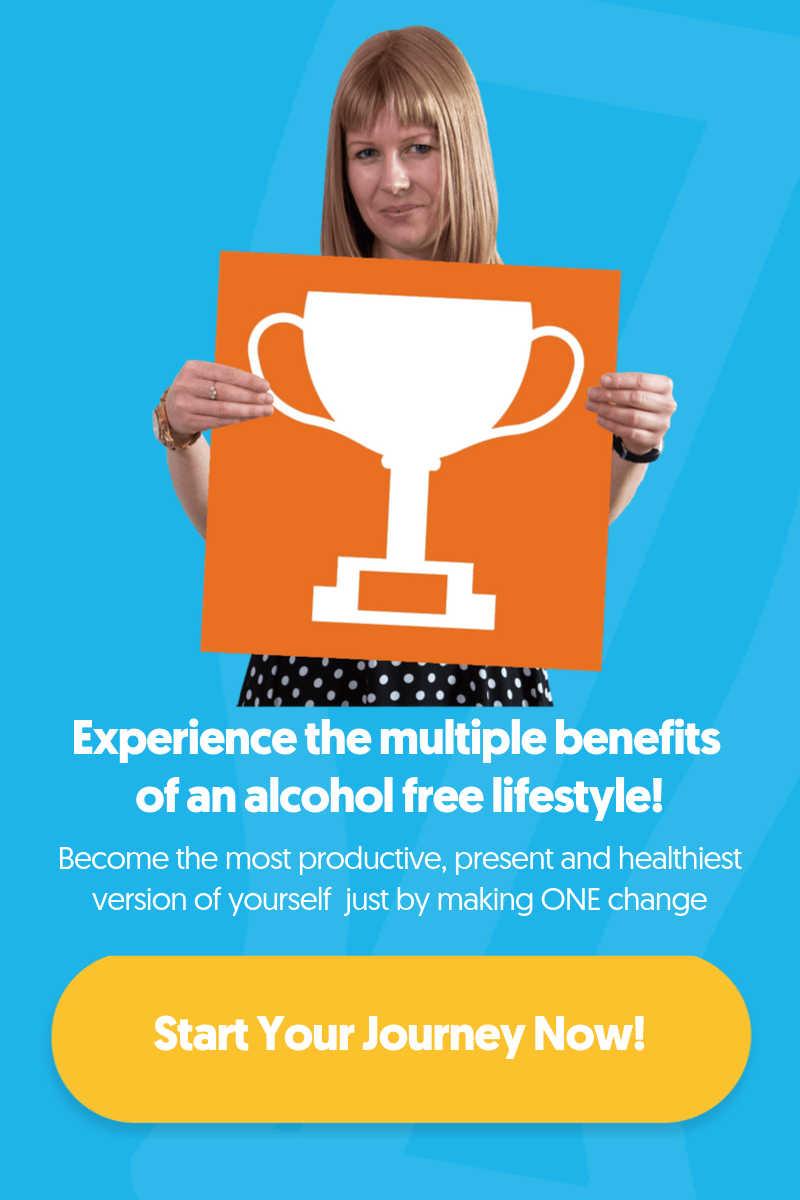We’re all eating organically, running weekend 10k’s, cooking with coconut oil and choosing avocado on toast over carcinogenic fry-ups. But could all of this be in vain, for the sake of a glass of wine after work, or those Saturday night G&T’s? Ali Roff, Editor-at-Large at Psychologies magazine discovers how alcohol really affects weight-loss, no matter how much you drink…
From mindfulness meditation holidays, to post-yoga Beetroot Lattes (it’s a ‘thing’, I promise, and seriously yummy); there’s never been a trendier time to be healthy, and who doesn’t want to feel good in their body and live a long and happy life? I know I do. But as a yoga teacher, health retreat host and Psychologies editor-at-large, for all my knowledge on physical and mental wellness, there’s one health ‘trend’ that we don’t seem as keen to catch on to; going ‘alcohol free.’
In fact, it’s only after I studied to be a yoga teacher that I even considered cutting out alcohol. But the more I looked into it, the more it didn’t make sense in my life; I was prioritising health in every other way – I ate healthily and organically, worked out, I meditated. But I was shocked to find out the extent to which the negatives of alcohol seemed to sabotage so the positives of my otherwise healthy choices. For all the chemicals we try to avoid through eating organically, our bodies see alcohol as a ‘poison’. And for all the nourishing, fresh, unprocessed food we eat, precious nutrients are depleted in the process of ridding our bodies of this poison. For all the meditation we practice, alcohol messes with our emotional balance. And for all the yoga, running, dancing, weights we lift or walking we do each week, alcohol hijacks our body’s chances of burning body fat.
Alcohol and weight loss
Yep, you read that right – not only does alcohol have no nutritional value and so solely comprises of ‘empty calories’, research published in the Journal of Clinical Investigation found that when we drink, alcohol is actually used as the bodies primary source of fuel. This means whether we’re running, cross training, doing Pilates or playing tennis, these useless alcoholic calories are used to power our bodies before we ever even touch the energy stores from the carbohydrates (glucose), or fats (lipids) in our food.
These two fuel sources are healthy and essential, but too much of them (say after one too many chocolate bourbons) and these will store as adipose tissue or excess body fat. And if we’re active and moving each day, a bit of indulgence here and there is no problem. But drink more alcohol than we can burn off while wearing our trainers or on the yoga mat, and we’ll never touch the excess bodyweight were carrying around from that Saturday night takeaway whether we go to the gym the next day or not.
Alcohol and muscle
Though it’s not to say that working out is completely negated by a pint of beer or two the night before; our cardiovascular system still benefits from the exercise, but if it’s strength, definition or that elusive six-pack your looking to build, I might be about to burst another bubble. Research by Mary Ann Emanuele, M.D., and Nicholas V. Emanuele, M.D, found that alcohol affects our levels of sex hormones; in particular, testosterone; which, you guessed it, is important in the function of muscle growth and excess fat burning.
Alcohol and hunger
Not only are our inhibitions and reasoning lowered when we drink (meaning a family sized bag of crisps can disappear in minutes), but it can also affect our sleep. Research highlighted by sleep scientist Matthew Walker in his brilliant book Why We Sleep: The New Science of Sleep and Dreams (Allen Lane, £9.99) has found that alcohol impacts our ‘sleep architecture’, and can be detrimental to our sleep quality, causing decreased ‘slow wave sleep’ and more periods of wakefulness. Poor sleep has a knock-on effect for our hunger hormones, causing an imbalance in levels of ghrelin (which tells us when we’re hungry) and leptin, (which tells us when we’re full), which could cause us to overeat the next day.
Knowledge is empowerment
So while I’m not one for counting calories, I try to use mindfulness to practice awareness around what my body needs, rather than what my mind wants. But, with around 150 calories in a glass of white wine or pint of beer, 120 calories in a double spirit, and a whopping 215 in a pint of cider – I was shocked to discover that drinking three bottles of cold cider on ice over a sunny afternoon was the same as eating three Krispy Crème doughnuts.
I had to ask myself, would I ever otherwise decide to eat three doughnuts in a row? And if I did, how would my body feel afterwards? For me, the decision came down to wanting to live in a healthy, happy body, and deciding to listen to what it needed, what it thrived on and what I needed to do to best support this incredible vehicle that I experience my life through.
Check out real examples of how an alcohol-free lifestyle can help you get in the shape of your life…
How Going Alcohol-Free Made Me Fitter, Happier and Healthier
Think It, Write It Down and Be Fit AF! | OYNB Podcast
My Journey to a Healthy Lifestyle and Running a Marathon
Want to see how your body could thrive on an alcohol-free lifestyle? One Year No Beer is the leading habit changing programme with a 96% success rate – sign up for one of the challenges here, and get access to the incredibly supportive OYNB forum, where you can meet, be inspired and supported by like-minded people on their own alcohol-free journey.

An entrepreneur and former senior oil broker, Ruari gave up drinking after excessive consumption almost cost him his marriage, and worse, his life. Going alcohol-free improved his relationships, career and energy levels, leading to him founding OYNB to provide a support network for others.






